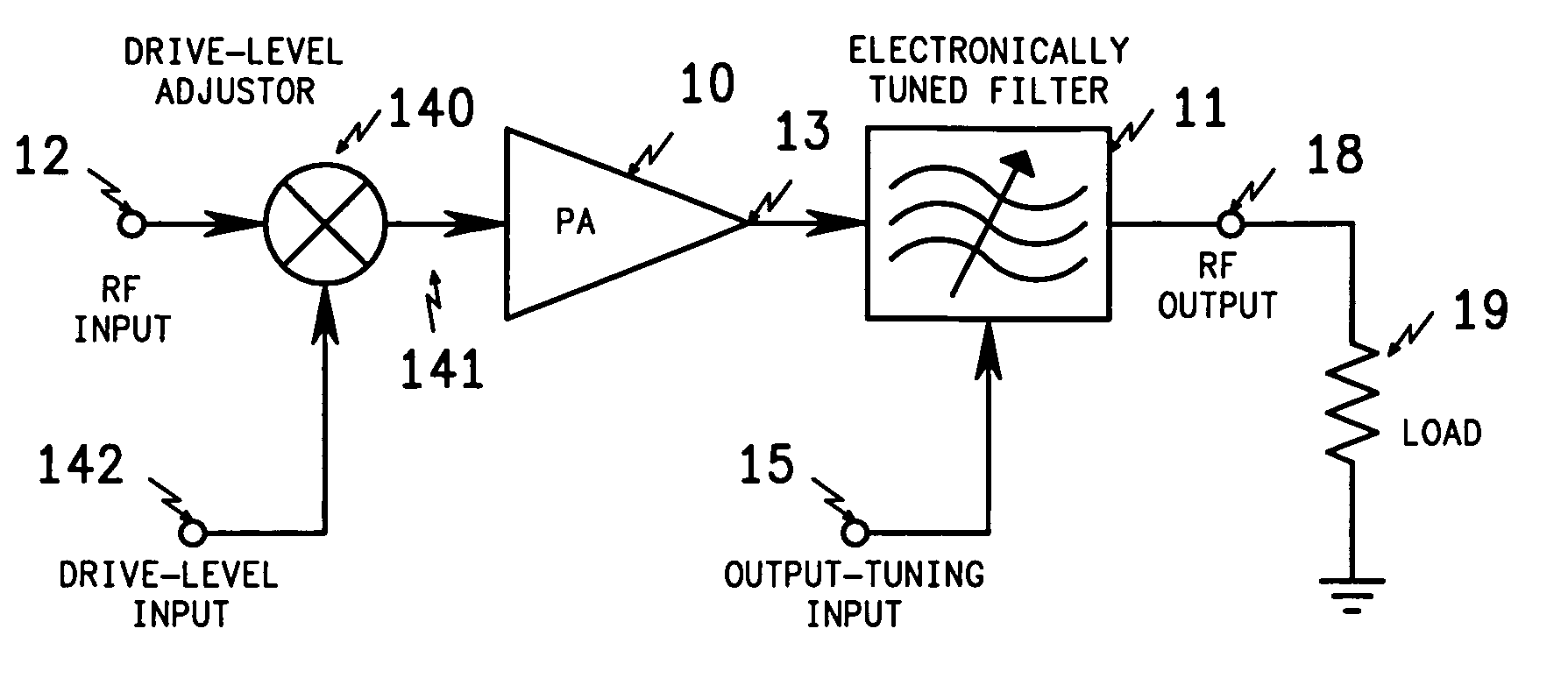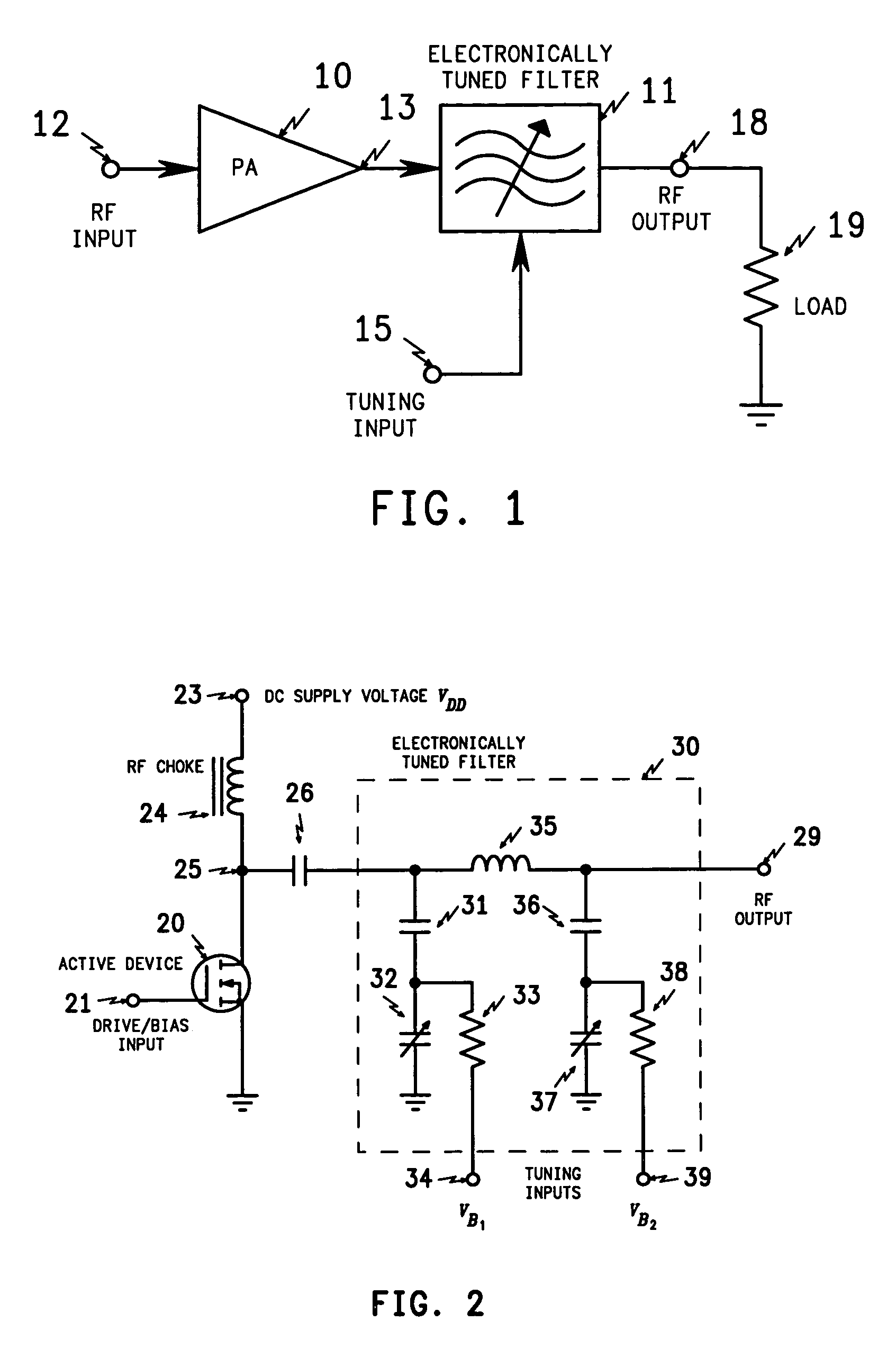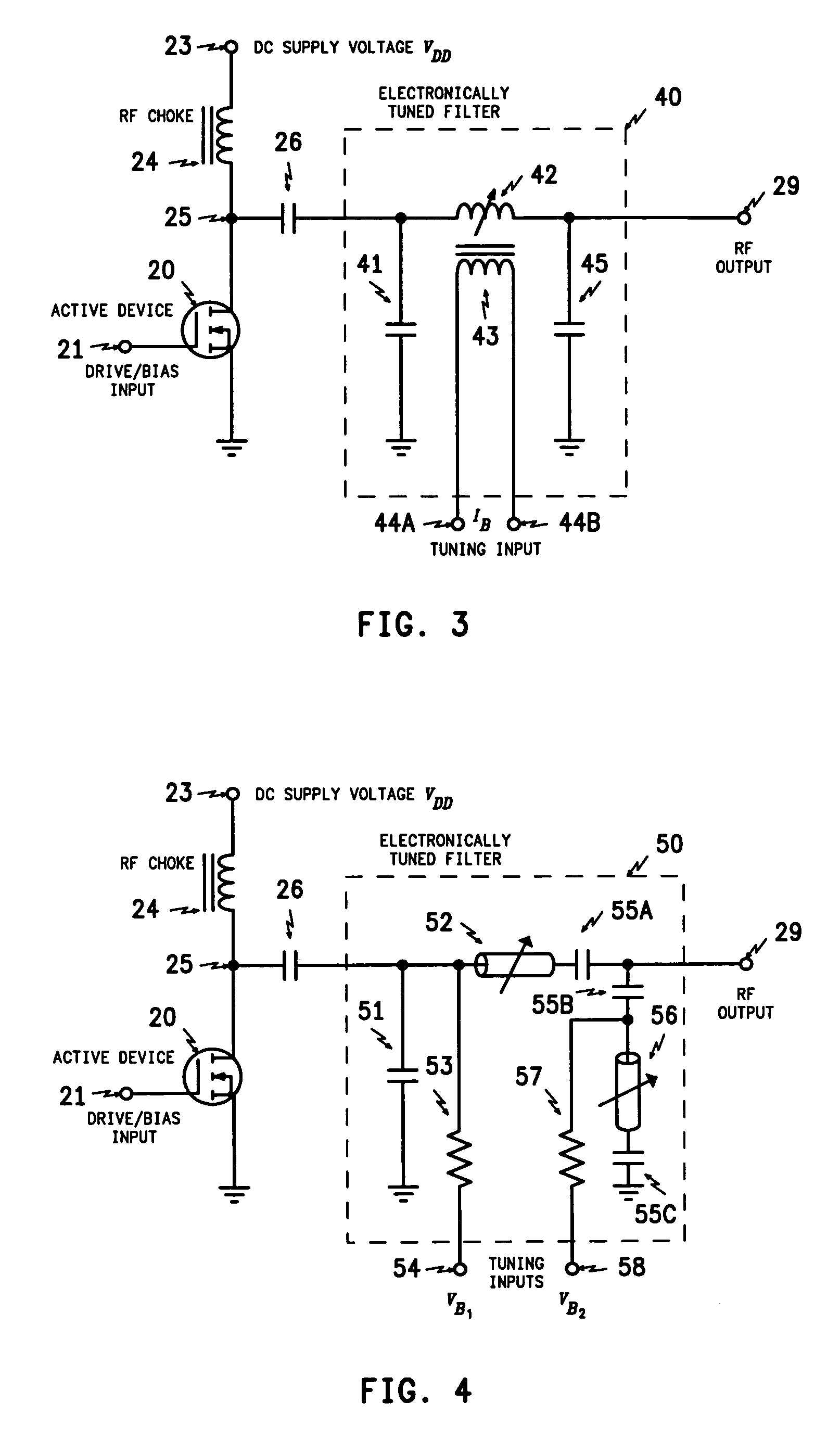Electronically tuned power amplifier
- Summary
- Abstract
- Description
- Claims
- Application Information
AI Technical Summary
Benefits of technology
Problems solved by technology
Method used
Image
Examples
Embodiment Construction
[0093]FIG. 22 presents the circuit of an embodiment of the invention that uses class-E power amplification and two electronically variable capacitances.
[0094]RF drive is applied at input 200, which is coupled to transformer 201. Transformer 201 is preferably an equal-delay (Guanella) type for maximum bandwidth. Its output is coupled by blocking capacitor 202 to the gate of active device 203, which is an RF-power MOSFET. Gate-swamping resistor 210 provides a resistive load to transformer 201 and thereby also to the driving signal.
[0095]Gate bias is applied at terminals 204 and 205. Terminal 205 is grounded. Resistors 209 and 210 are connected in series between terminal 204 and the gate of MOSFET 203 and provide a path for bias to reach the gate. Resistor 209 has a resistance large enough to block passage of the RF signal into the bias terminal. Capacitors 208 and 211 bypass RF signals to ground. Resistor 207 serves as a static drain and discharges capacitors 208 and 211 when the circ...
PUM
 Login to View More
Login to View More Abstract
Description
Claims
Application Information
 Login to View More
Login to View More - R&D
- Intellectual Property
- Life Sciences
- Materials
- Tech Scout
- Unparalleled Data Quality
- Higher Quality Content
- 60% Fewer Hallucinations
Browse by: Latest US Patents, China's latest patents, Technical Efficacy Thesaurus, Application Domain, Technology Topic, Popular Technical Reports.
© 2025 PatSnap. All rights reserved.Legal|Privacy policy|Modern Slavery Act Transparency Statement|Sitemap|About US| Contact US: help@patsnap.com



